What does it mean for Chicago to be in a warming hole?
Chicago weather: What is a warming hole?
Fox 32's Tim McGill explains how Chicago, along with other midwestern cities, are not warming on the same trend as the rest of the region.
CHICAGO - If it seems to you like we made it through summer relatively unscathed in terms of torrid temperatures, you are right.
The average temperature (which includes both the highs and lows) for the season was 73.6 degrees. That is just .3 degrees above average. June ended up .2 degrees above average. That was followed by July coming in at .3 degrees above average. Finally, August ended up a half degree above average.
This past summer in Chicago tied two other years as the 35th warmest summer on record. Many people who live in the south, especially along the Gulf Coast and in the desert Southwest, would have loved to change places with us. Extreme heat made headlines in several cities.
Phoenix smashed several records. They had the longest stretch of consecutive days with a high temperature of 110 degrees or more. That streak lasted 31 days. It blew away the previous record of 18 set back in 1974. The city also tied a record with six straight days having a high of 115 degrees or hotter.
Miami also made headlines with their heat. July was their hottest month on record. In Miami, like here, it's not just the heat it is also the humidity. They had a record 46 straight days this summer with a heat index (what it feels like when considering both heat and humidity) above 100 degrees.
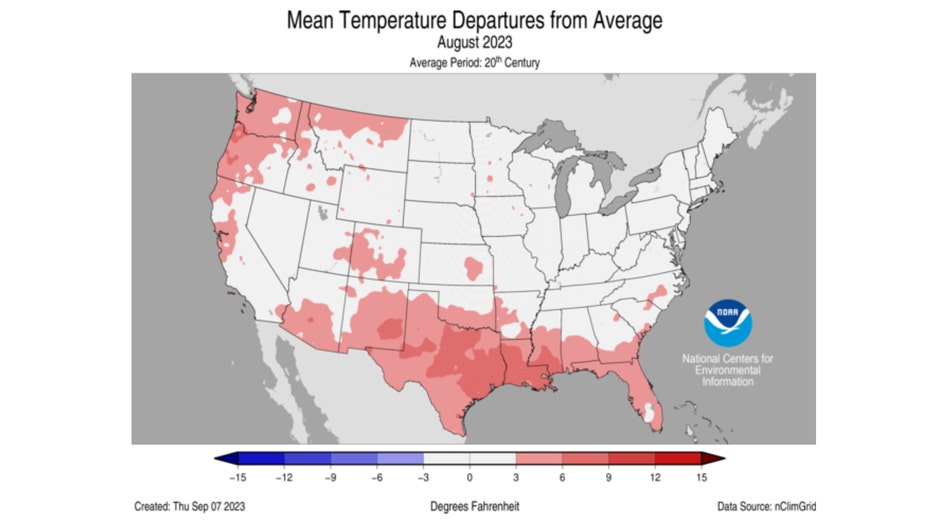
The August 2023 National Climate Report from the National Weather Service confirms that much of the middle part of the country, and most of the Midwest had a more typical summer when it comes to temperatures than people in southern and northwestern states.
The lack of color on the graphic above indicates areas that were right around average for the final month of summer. Some scientists suggest that we might be inside a "warming hole," meaning a part of the country that climate change hasn't impacted as hard as the rest of our nation. While climate change is nudging temperatures higher across most of our planet, the "warming hole" seems to be a temporary glitch in an otherwise predominantly warming world.
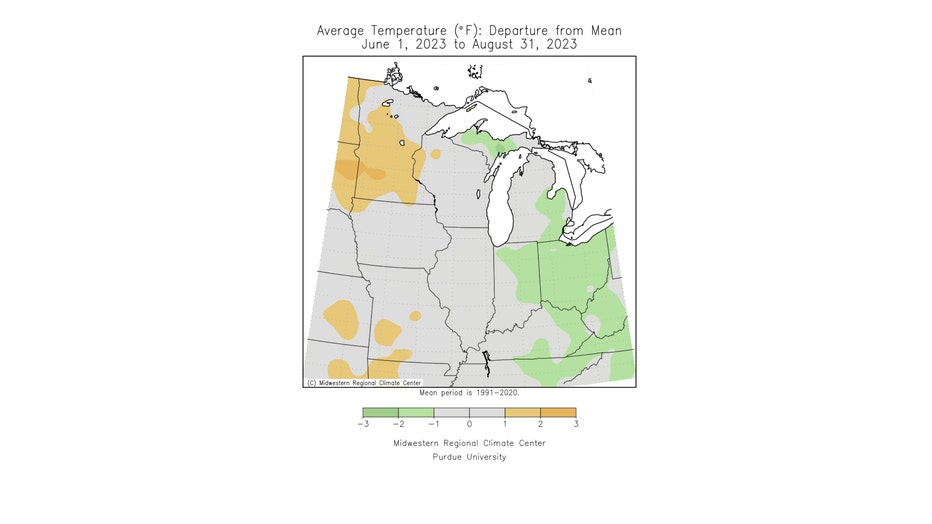
The Midwest Regional Climate Center's map of departure from mean temperatures for this past summer shows all of Illinois and most of the Midwest was either around or below average. A broader view from the National Center For Environmental Information shows a warming hole that looks more pronounced.
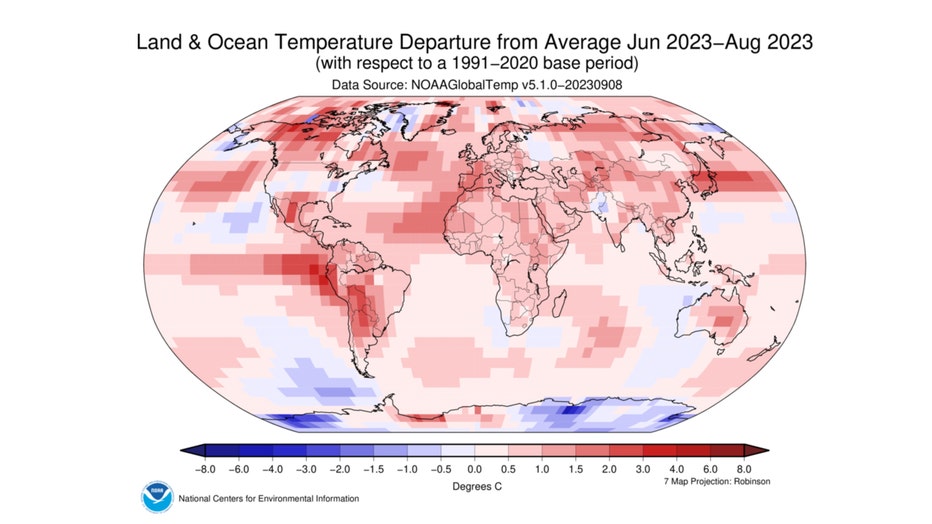
The map of the world's land and ocean temperature departure from average this past summer shows a lot of red in various shades across North and South America. Red represents regions where temperatures were above average. The center of our country has much lighter shades of red or none at all. There are even some shades of blue indicating portions of the US where temperatures were below average overall for the period.
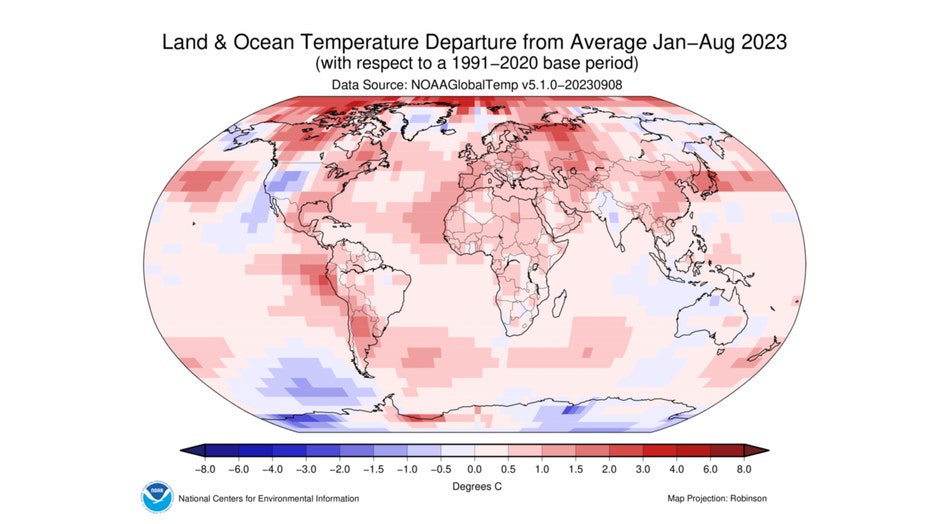
The same global report for August also includes a summary of the year to date. It has an anomalous blob of blue across the western half of our country which was relatively cooler compared to average from January through August.
A new paper in the AMS Journal of Climate titled "Why has the Summertime Central U.S. Warming Hole Not Disappeared?" states the following:
A cooling trend in summer (May-August) daytime temperatures since the mid-20th Century over the central United States contrasts with strong warming of the western and eastern U.S. Prior studies based on data through 1999 suggested this so-called warming hole arose mainly from internal climate variability, and thus would likely disappear. Yet it has prevailed for two more decades, despite accelerating global warming, compelling reexamination of causes that in addition to natural variability could include anthropogenic aerosol-induced cooling, hydrologic cycle intensification by greenhouse gas increases, and land use change impacts.
They say the reason there is a warming hole is because of extra climate-change induced rainfall. The sun's energy is expended post-storm as it evaporates the precipitation that has fallen. That means less energy left over to warm the air. Cloud cover associated with this extra rainfall also has a net cooling effect as it blocks sunlight.
Weather models suggest this warming hole is only temporary and will fade relatively fast. The projections are that within 15 years or so these same areas will experience a greater number of heat waves that will also grow in intensity. In other words, don't count on it remaining relatively "cool". It is not unusual for pockets of the world to see temperatures that dip below average on these monthly and seasonal temperature summaries.
The important thing to remember is that overall our planet continues to warm above its 20th century average. We just experienced the warmest August on record for Earth. It was the 45th-consecutive August and 534th-consecutive month with temperatures above the 20th-century average. That means if you are 44 or younger, you have never lived during a time that the global average temperature was below the 20th-century average.
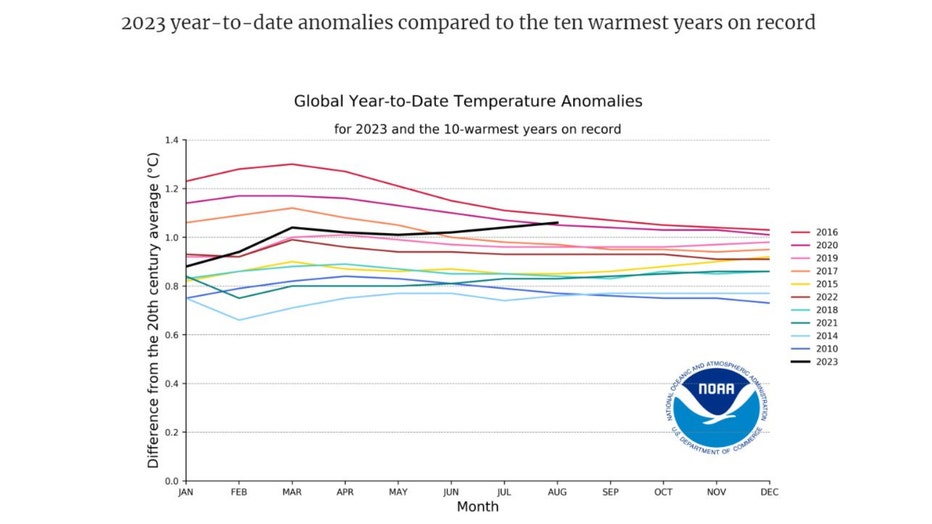
This year is trending to be a record-setting warm year for Earth. There is a 93% chance this will be the warmest year on record and a 99.5% that it will end up among the top 5 warmest years. So while portions of our planet may be cooler than others, there is no doubt that overall the world is warming.
A warming hole should not be considered an area that is a "safe haven" from climate change. Ninety percent of counties in the US have experienced a federally declared weather disaster between 2011 and 2021. Not all weather disasters are due to climate change, but attribution science is linking an increasing number to it directly or verifying that the disasters are being made worse because of climate change.
The World Meteorological Society says that climate change has caused a fivefold increase in weather-related disasters in the 50-year period ending in 2021. The US has experienced a record 23 billion-dollar weather and climate disasters through August. It is the highest number for a single year since these records began. These disasters have killed 253 people and caused more than $57.6 billion in damages.

